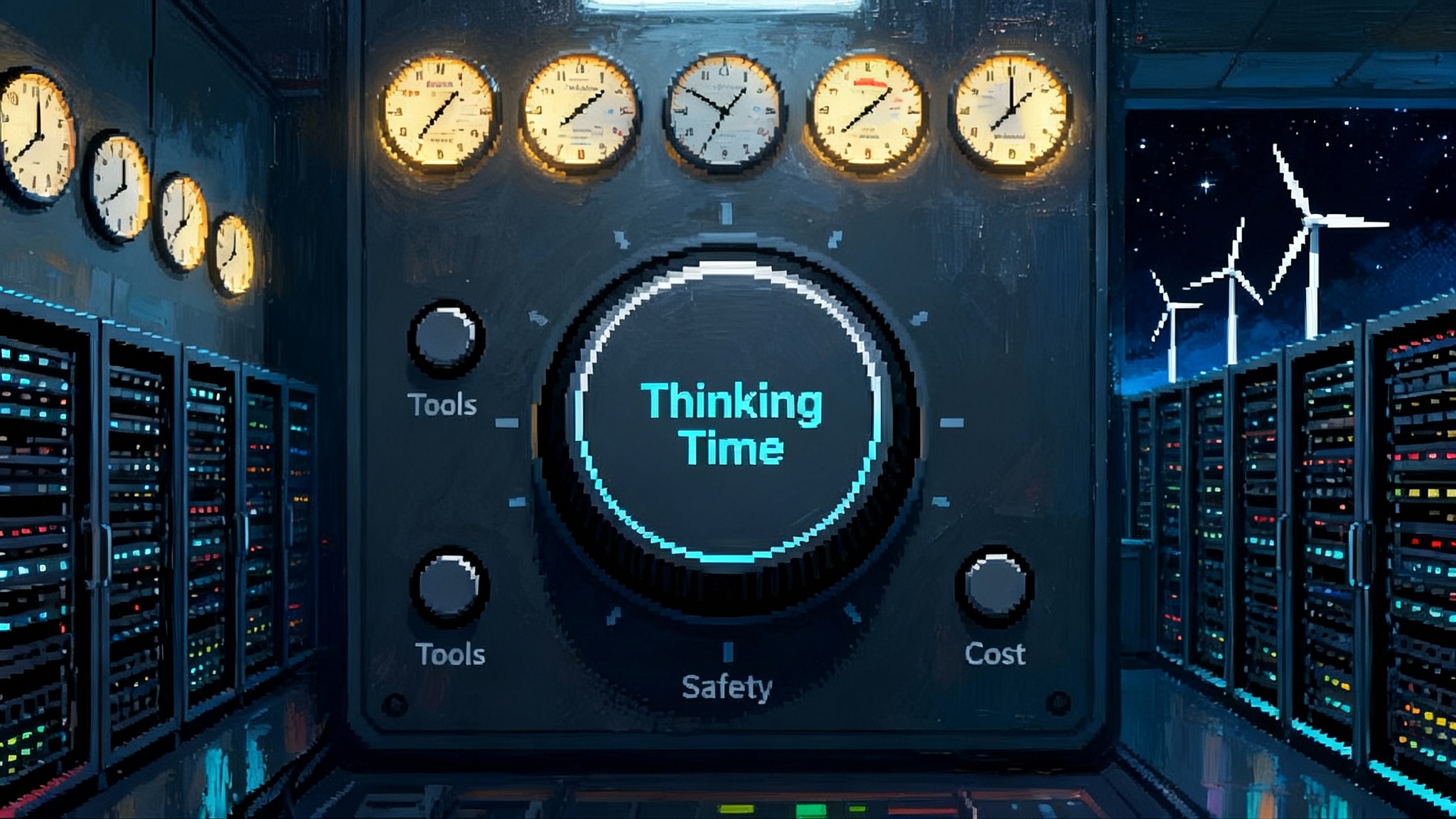When Autonomy Meets Adversary: The Control Stack Arrives
After government hijacking tests and fresh November research, a clear pattern has emerged. The next breakthrough is not bigger models. It is a deferral-first control stack that makes agents reliable at machine speed.

Breaking news, then a turning point
In January 2025, the U.S. AI Safety Institute at NIST published the first government-led deep dive into agent hijacking. The team measured how easily autonomous assistants could be nudged into running code, exfiltrating data, or launching phishing with only crafted inputs. They extended an evaluation framework, added new attack tasks, and showed that repeated attempts dramatically raised success rates. It was a sobering read because it placed numbers behind what many builders felt anecdotally: ungoverned autonomy is brittle in contact with adversaries. That moment is well captured in NIST's technical blog on agent hijacking evaluations.
Ten months later, in November 2025, a new study shifted the conversation from diagnosis to treatment. A systematic analysis of control protocols compared strategies such as resampling, model handoffs, and hard deferral on risky actions. The headline result was clear. Deferral on critical actions proved both effective and robust under adaptive attacks, while other tactics degraded as attackers learned the guardrails. The paper's numbers turn a philosophy into an engineering specification. You can see the details in Evaluating control protocols for untrusted agents.
Taken together, these milestones frame the next frontier. The path forward is not just better reasoning or bigger context windows. It is a control stack that treats security as the reliability layer. That stack makes agents dependable at machine speed.
Why more capability alone will not save us
Bigger models reduce some error modes, but hijacking exploits architecture, not only capability. If an agent can be tricked into treating untrusted inputs as instructions, then scaling its reasoning may only produce more confident justifications for the wrong action. The target has moved from the model's weights to the system's decision boundaries.
This is the same lesson enterprise security learned when single sign-on did not end breaches. Reliability gains came from layered controls and verified boundaries. Agents need the same shift: from monoculture model tuning to a defense-in-depth control plane.
The shift also aligns with how we already regulate consequential actions elsewhere in software. Payments are a good example. We have policy gates, limits, and alerts because money is a policy surface. For a deeper dive on this lens, see how payments become AI policy. The point generalizes: when actions change the world, controls beat cleverness.
The control stack in three layers
The emerging pattern is simple to name and specific to implement.
- Deferral on critical actions. When an action crosses a defined risk threshold, the agent must refuse or route the decision to a trusted policy engine or human.
- Verifiable sandboxes. When an action needs power, run it in a constrained, attestable environment with logged inputs, outputs, and network access.
- Cryptographically bound tool access. Every tool invocation carries a scoped, signed capability that proves who is calling, what they are allowed to do, and for how long.
Think of this as an air traffic control tower for agents. Models propose routes. The tower clears, denies, or escalates. The runway is a sandbox that logs every takeoff and landing. The hangar keys are cryptographic capabilities that expire quickly and cannot be copied.
Layer 1: Deferral on critical actions
Deferral is not a soft-nudge warning. It is a hard boundary with crisp definitions.
- What counts as critical. Define this by consequence, not convenience. Examples: payments over a dollar threshold, writing to production databases, sending external emails, changing identity settings, code execution with network egress.
- How deferral triggers. Combine policy rules with risk signals. Risk signals can include content classifiers for secrets, provenance checks for untrusted inputs, anomaly detection on tool call sequences, and velocity caps on repeated failures.
- Where deferral routes. You have three destinations: a trusted model checkpoint, a human operator, or a deterministic policy engine. A trusted model checkpoint is a separate model or configuration optimized for refusal and verification. A human operator handles the exceptions queue with context. A policy engine enforces predeclared outcomes for repeatable cases.
Deferral creates two compounding effects. First, it makes the attacker blind to the internals of your decision boundary because the boundary is outside the agent loop. Second, it buys time. If an attack requires ten queries to set up, a well-timed deferral turns a fast exploit into a slow case you can observe and shut down.
Implementation tips for week one
- Start with refusal patterns. Teach the agent to state a reason code and propose a safe alternative. For example: I cannot email external recipients with attachments from untrusted sources. I can escalate this draft to review or send a sanitized summary.
- Add small-integer budgets. Allow at most N risky tool calls per session before a forced deferral. Set N to 1 for write actions and 3 for read actions that touch sensitive scopes.
- Log the refusal reason and the upstream prompt features that triggered it. Use this to build a labeled dataset for future improvements.
Layer 2: Verifiable sandboxes
A sandbox is only as useful as what you can prove about it. Two properties matter most.
- Constrained capability. Default to read-only. Permit only the specific system calls and network destinations the task requires. Use container profiles with strict policies. For code execution, predefine libraries and forbid dynamic package installs unless explicitly approved by policy.
- Attestation and audit. Before the sandbox runs, record its manifest: base image hash, allowed tools, network policy, and time-to-live. During execution, stream an append-only log of inputs, outputs, file diffs, and network requests to a ledger. After execution, produce a short, signed report that can be verified independently.
Practical playbook
- Run all write-capable tools inside ephemeral, per-task sandboxes with a maximum lifetime measured in minutes. One task, one environment, then garbage collect.
- Require the agent to request capabilities explicitly. The request is a structured plan: action type, resource path, estimated side effects, and rationale. The control plane approves or denies and issues a time-bound token.
- Wire the sandbox to fail closed. If logs cannot be written, or if the time-to-live expires, the environment halts and defers.
A useful metaphor is a rental workshop. The agent can borrow a drill only from the tool counter, must return it before closing time, and every hole drilled is written to the job card. If anything goes wrong, the power shuts off first, then the supervisor checks what happened.
Layer 3: Cryptographically bound tool access
Most agent failures turn serious only when a tool call succeeds. That is where cryptography becomes your ally. Capability-based security replaces vague trust with portable, scoped proof.
- Identity. Bind every agent session to a strong identity that can be attested. Use hardware-backed keys where possible. Keep keys outside the agent's memory and inject only short-lived proofs. For a deeper treatment of this topic, see the agent identity layer.
- Capability. Replace blanket API keys with capability tokens that specify resource, verb, scope, and expiry. Prefer selective disclosure so only the necessary claims are presented to each tool. Mint tokens per action, not per session, to narrow the blast radius.
- Channel. Use mutual authentication for tool channels and reject calls that lack both the right token and the right transport properties. This prevents replay and man-in-the-middle attempts from a compromised agent memory.
With these three pieces in place, a hijacked prompt is not enough. The attacker would also need to mint a valid capability, which they cannot do without the control plane. That is the reliability gain you can measure.
What the November results tell us to ship now
The November 2025 study did more than compare tactics. It stress-tested them with adaptive adversaries. Resampling and self-critique dropped off when the attacker learned when monitors fired. Hard deferral on critical actions remained robust because it denied the attacker visibility into the guardrail and withheld the very capability needed to cause harm. Those are design constraints you can translate into policy today.
In practice,, treat the control stack as a non-interactive boundary at the moment of risk. Make confirmation inner loops invisible to the attacker. Prefer deny by default for any action that changes state outside the sandbox.
The AgentOps platform layer is taking shape
As organizations move from pilots to production, the need for a shared control plane becomes obvious. Expect AgentOps platforms to look like this:
- Policy engine. A versioned, testable repository of action policies mapped to business objects. Think code owners and change windows for agent actions.
- Evidence pipeline. Every session produces a standard bundle: refusal reasons, capability grants, sandbox manifests, and output hashes. This feeds audit, forensics, and learning loops. For how this intersects with regulatory posture, connect it to how compliance becomes the new moat.
- Simulation harness. A replayable environment for red teams and underwriters. Load recorded sessions into simulated tools, inject adversarial inputs, and generate risk curves.
- Kill switch and staged rollout. Per-agent, per-tool, and per-tenant emergency stops with gradual ramp controls. Roll forward only when refusal and escalation metrics stay within bounds.
- Attestation services. Prove the control plane itself is running the right code with the right policies.
Vendors will differentiate on developer ergonomics. The ones to watch will offer declarative policies, minimal boilerplate, and shallow learning curves for existing teams. Integration with identity providers, secrets managers, security information and event management systems, and data catalogs will be essential.
Underwriters will price agent risk, not just cyber risk
Traditional cyber insurance talks about endpoints and patches. Agent insurance will ask for a different packet of evidence.
- Proof of deferral coverage. What fraction of high-consequence actions are under deferral rules. Show the list.
- Mean time to deferral. How fast does the system refuse after the risk spike begins.
- Exfiltration window. If a data leak starts, how many seconds of exposure occur before the control plane kills the channel.
- Proven fail-closed rate. When the control plane fails, how often do tools remain inaccessible rather than open.
- Red team replay results. How does your system perform against a standardized attack suite and how does it degrade after 10, 50, or 100 attempts.
Underwriters will not only reduce premiums. They will shape deployment checklists. That is a good thing, because it aligns incentives around measurable controls rather than general assurances.
UX will change: refusal and escalation as primary actions
Users do not want to read policy. They want clear, reversible behavior.
- Refusal that explains. When an agent refuses, it shows the policy label and a short rationale in plain language, then offers two safe paths: escalate with context or continue in read-only mode.
- Escalation that respects time. A human-in-the-loop queue with service-level targets should feel like a customer support workflow, not a security delay. The agent should package the evidence for the reviewer: inputs, proposed action, risk signals, and a minimal diff of the expected change.
- Just-in-time permissions. Instead of a giant consent form at session start, the agent shows a narrow, time-bound permission when it actually needs a tool. The default when the user ignores the prompt is no.
- Visibility without noise. A session timeline that highlights refusal and grant moments is enough. Hide low-risk chatter. Surface what changed and why.
Treat these patterns as product features. They build trust faster than any capability demo because they make the system's limits legible.
What builders should do in the next 90 days
- Inventory critical actions. List every tool call that can change money, data, identity, code, or access control. Group by consequence, not by microservice.
- Declare deferral rules. For each critical action, decide refusal conditions, escalation destinations, and evidence you will attach to a case.
- Wrap tools with capability checks. Replace static secrets with scoped, signed tokens minted by a control service. Expire tokens aggressively. Bind tokens to session identity and channel properties.
- Stand up ephemeral sandboxes. Execute all write actions inside short-lived environments with strict profiles and no default network egress. Require manifests and attestation.
- Measure refusal friction. Track how often refusals occur, how long escalations take, and what percentage resolve with safe alternatives. Iterate on prompts and UI to reduce user frustration without relaxing policy.
- Rehearse kill switches. Run game days where agents attempt off-policy actions. Verify that the control plane can cut power and that logs are complete.
Each of these steps is small enough to ship. Each produces evidence an underwriter or regulator can accept. Together they turn security into deployment speed, because approvals go faster when you can prove how things fail.
What this means for the ecosystem
- Labs and model providers. Expect pressure to publish control-plane friendly interfaces. That includes first-class deferral signals and native support for capability tokens. Models that summarize risk and can be queried for action rationale will gain an advantage.
- Cloud and enterprise software. The winners will provide policy primitives and verified sandboxes as managed services. Expect secure function execution, per-task enclaves, and built-in evidence pipelines.
- Open source. Benchmarks will evolve to capture repeated-attack dynamics and cross-agent transfer. Expect suites that measure not only model cleverness but control-plane fidelity.
- Regulators. Guidance will likely shift from opaque capability thresholds to verifiable control requirements. Think incident reporting formats, attestation standards, and minimum viable deferral coverage for certain sectors.
The acceleration story
Security has often felt like a tax on velocity. In agent systems it can be the opposite. A clear control stack reduces the unknowns that slow approvals and stall pilots. It also establishes a contract with your users. They see the limits, they see the evidence, and they see the escape hatches. That clarity makes it possible to move faster without hand-waving.
The early 2025 hijacking evaluations gave us the diagnostic. The November 2025 protocol results gave us a proven pattern. The next step is not mystical. It is engineering. Build a deferral-first control plane. Run power in verifiable sandboxes. Bind every tool call to a cryptographic capability. Do this well and agents stop being risky experiments. They become reliable colleagues at machine speed.








